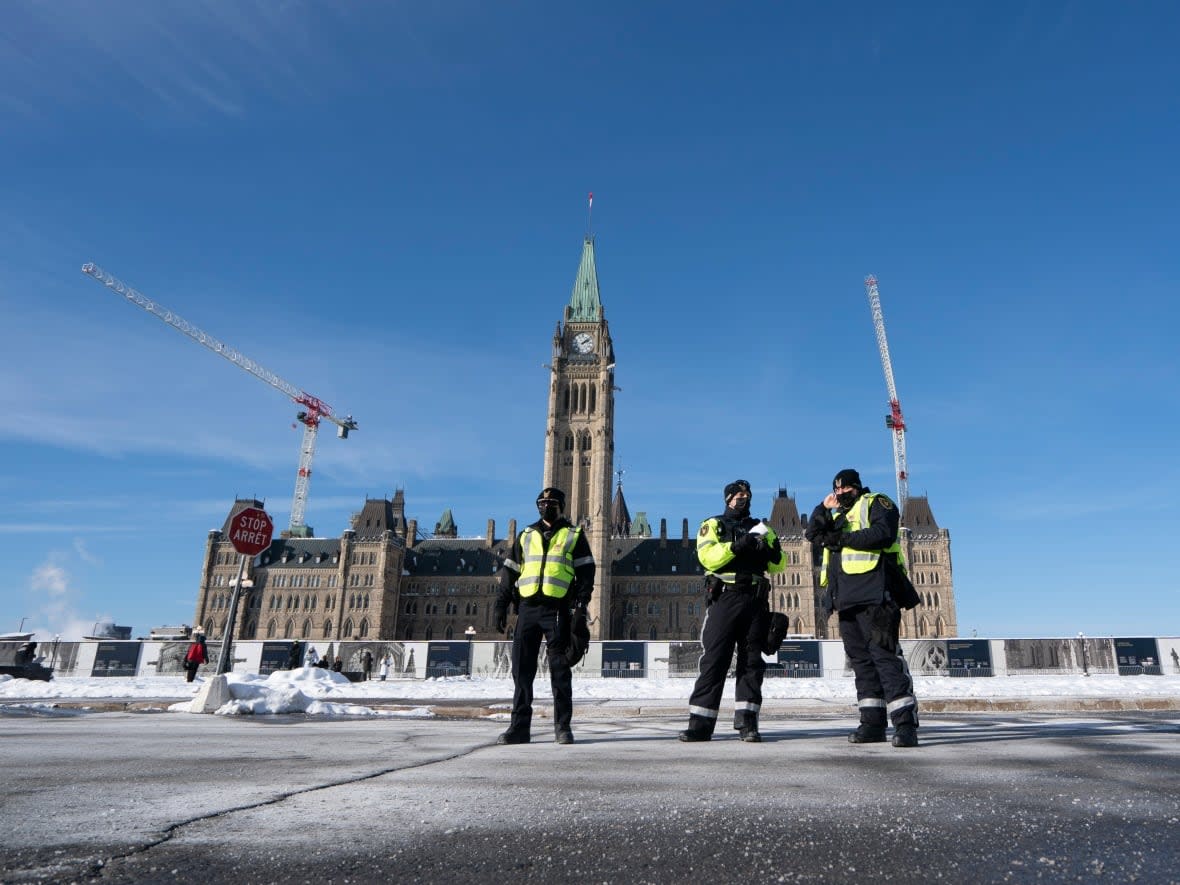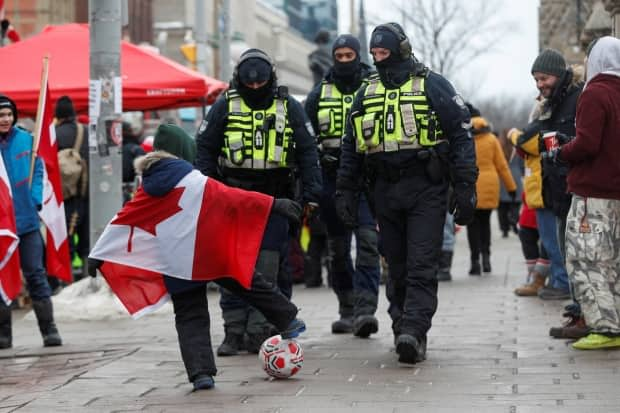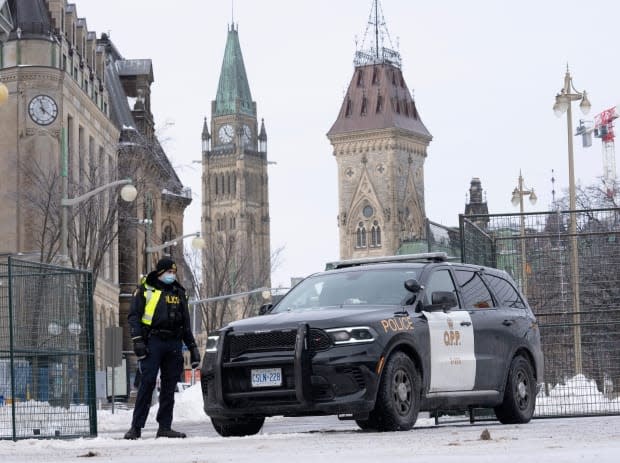Texts, emails show what Ottawa police told convoy organizers ahead of protest

Text messages between one of the convoy protest organizers and an Ottawa police officer show how police told protesters where to park, which one expert calls an agreement gone awry.
Convoy protest treasurer Chad Eros filed an affidavit with the Ontario Superior Court as a respondent to the proposed class-action lawsuit responsible for halting the honking downtown. In that affidavit, text messages and emails revealed how organizers communicated with police days before thousands of people and hundreds of vehicles began to paralyze downtown streets.
On Jan. 25, three days before the most eager first convoy protesters arrived with large trucks to block city streets, Ottawa police Const. Isabelle Cyr-Pidcock texted a protester named "Chris," requesting an itinerary of the protesters.
"I will have a definite plan for you tomorrow morning," read the officer's text to the protester.
The protest organizer responded by saying they were "so happy" police and organizers could work together, and the officer responded with "Absolutely!"

Coventry Road lot 'secured' for protesters
The affidavit does not include all communication between the two. It does include another text on the night of Jan. 25 where Cyr-Pidcock sought itinerary information.
"Don't want to bug you but if you want us to work with you, I need the info that I requested. When will you send everything?" the officer wrote just ahead of the three-week illegal occupation of Ottawa's downtown core.
Chris responded to say it was being worked on but no further texts appear to be exchanged on that date.
The next morning, Cyr-Pidcock tells the protester about the parking lot at Raymond Chabot Grant Thornton (RCGT) stadium on Coventry Road, which had been "secured" by police for convoy protesters coming from the east.
"You can start working on a shuttle for them," she wrote. "Almost done planning for the west convoy."
The Coventry Road encampment became a stronghold for protesters and was used to co-ordinate meal and fuel deliveries to participants downtown.
Protesters told to park on Wellington, SJAM Parkway
Chris doesn't appear to respond but the officer sends another text a few hours later saying the protesters won't be able to start staging everyone before 8 a.m.
"Any chance you guys can change your opening ceremony later so that we can get everyone settled properly?" she writes.
The protester again doesn't appear to respond, but Cyr-Pidcock says in a late afternoon text protesters "are going to be able to park" on Wellington Street and along Sir John A. Macdonald Parkway.
"We'll provide routes into this area tomorrow morning. Staging area will be ready on Saturday morning," the text said.

An email sent from Cyr-Pidcock on Jan. 27 provides routes to staging areas apparently set up by Ottawa police on Wellington and the parkway, which would eventually be filled with trucks and other vehicles for weeks.
The email included specific instructions to protesters on where they couldn't park because the roads were designated response routes for emergency vehicles — including Laurier Avenue West and Elgin Street between Wellington and Highway 417.
Protesters started arriving in the city on Jan. 28 and by the next day, thousands of people were converging on Parliament Hill accompanied by the constant honking of trucks and train horns. Wellington was clogged with vehicles belonging to protesters prompting several downtown businesses, including the Rideau Centre, to close.
The communications filed in court don't show any further texts or emails between Chris and Cyr-Pidcock until Feb. 9. That day, Chris says to the officer: "Remember you said they could build the tents?"
In the last communication between the two included in the court record, Cyr-Pidcock says: "The city let you stay there for almost two weeks. I think that was very generous. I will call you later tonight."
A little over a week later, police began action to remove protesters.

Police communication with protest 'typical'
Sam Hersh, who continues to take part in counter-protests against the convoy as a member of the organization Horizon Ottawa, says police guided protesters through the downtown core.
"It's always shocking to a certain extent ... but it's not surprising to me," he said. "There are so many stories of the collaboration that existed between the Ottawa police and the convoy protesters, and their complicity in it."
University of Ottawa criminologist Michael Kempa said it is "pretty typical" for police to communicate with planned protests when they expect participants won't stay for a significant period of time.
That was still the expectation in late January for the National Capital Region Command Centre, which pooled municipal, provincial and federal information. The centre expected protesters would leave the city "no later than" Feb. 2.
"In this case, it would seem that the Ottawa police were attempting to work out an agreement," Kempa said.
"In exchange for promises for not staying for an extended period of time, the Freedom Convoy would be given certain spaces to organize themselves and ensure they had some form of control over their protest, on the expectation that they would leave after two or three days."
By Feb. 5, now-former police chief Peter Sloly said his force did not have enough resources to end what would morph into an occupation. He would resign soon after.
Ottawa police did not respond to questions about the emails and texts in the affidavit.


